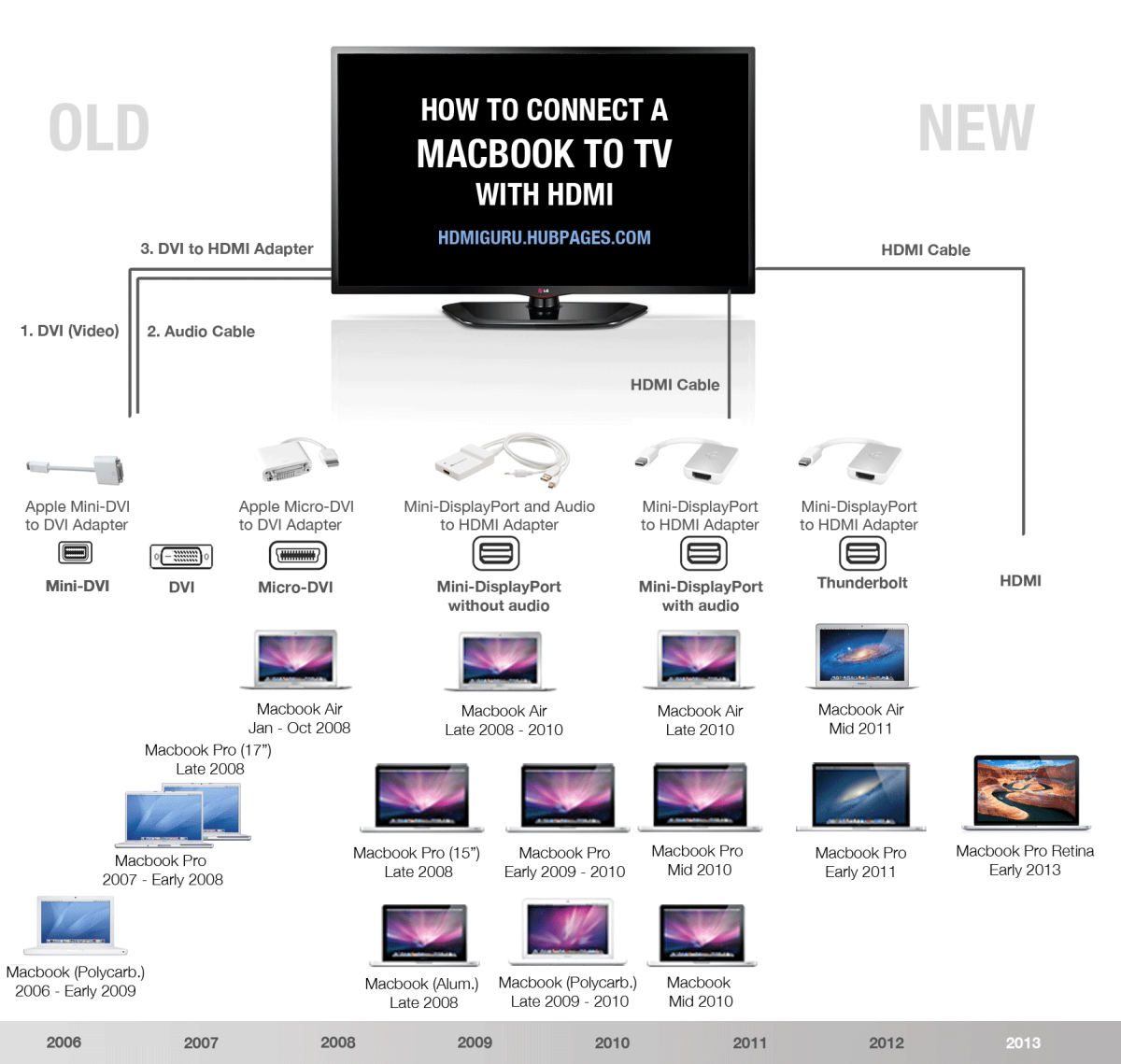Introduction
Greetings, MacBook lovers! Are you ready to expand the horizons of your viewing experience? In this comprehensive guide, we will navigate the effortless process of connecting your MacBook to your TV, allowing you to enjoy movies, videos, and presentations on a grander scale. With just a few simple steps, you can unlock a world of entertainment and productivity from the comfort of your own couch.
Selecting the Right Connection Method
HDMI: The Superior Choice
For the ultimate in image and sound quality, HDMI (High-Definition Multimedia Interface) is the preferred connection method. Most modern TVs feature at least one HDMI port, and your MacBook is likely equipped with an HDMI port or a Mini DisplayPort that can be adapted to HDMI. Simply connect the HDMI cable to both devices and sit back and enjoy.
USB-C: A Versatile Alternative
If your MacBook only has USB-C ports, don’t fret. With a USB-C to HDMI adapter, you can seamlessly connect your MacBook to your TV. This versatile adapter allows you to transmit both video and audio signals, ensuring a high-quality viewing experience.
AirPlay: Wireless Freedom
For a wireless connection that frees you from tangled cables, AirPlay is an excellent choice. If both your MacBook and TV support AirPlay, you can mirror your MacBook’s display or extend your desktop onto the TV without any physical connections.

Source turbofuture.com
Configuring Your MacBook’s Display Settings
Once you have connected your MacBook to your TV, you may need to adjust your display settings to optimize the viewing experience.
Setting the Resolution
To ensure that the image on your TV is sharp and clear, match the resolution of your MacBook’s display to that of your TV. You can adjust the resolution in your MacBook’s "System Preferences" under "Displays."
Choosing the Color Profile
The color profile determines the color accuracy and vibrancy of the image on your TV. For the most accurate colors, select the "Color LCD" profile in your MacBook’s "System Preferences" under "Displays."
Troubleshooting Common Issues
No Picture or Sound
- Verify that the HDMI cable is securely connected to both devices.
- Try using a different HDMI cable.
- Make sure that the input source on your TV is set to the HDMI port you are using.
- Check if the volume on your MacBook and TV is turned up.
Mirroring or Extended Desktop Not Working
- Ensure that both your MacBook and TV support AirPlay.
- Check if AirPlay is enabled on your MacBook and TV.
- Try restarting both devices.
Table: Comparison of Connection Methods
| Connection Method | Advantages | Disadvantages |
|---|---|---|
| HDMI | High image and sound quality | Requires a physical cable |
| USB-C to HDMI | Versatile, works with USB-C MacBooks | May require an adapter |
| AirPlay | Wireless freedom | May have lower image quality than HDMI |
Conclusion
Connecting your MacBook to your TV is a straightforward process that opens up a world of possibilities. Whether you want to enjoy movies on a grand scale, give presentations with enhanced impact, or simply extend your workspace, the methods outlined in this guide will empower you to do so effortlessly.
For more helpful tech tips and guides, be sure to check out our other articles. Enhance your digital experience today!
FAQ about Connect Your MacBook to Your TV: A Quick Guide
1. What cables do I need to connect my MacBook to my TV?
- HDMI cable (best option)
- Display Port cable
- Mini DisplayPort cable (older MacBook models)
2. Which connection type is best?
- HDMI offers the highest quality video and audio.
3. How do I connect my MacBook via HDMI?
- Connect the HDMI cable to the HDMI port on your MacBook and TV. Ensure both devices are turned on.
4. What if I don’t have an HDMI port on my MacBook?
- You can use an adapter, such as Mini DisplayPort to HDMI or Display Port to HDMI.
5. How do I change the display settings on my MacBook?
- Go to System Preferences → Displays → Select your TV and adjust the resolution and refresh rate.
6. Can I use my MacBook screen and TV simultaneously?
- Yes, by choosing "Mirroring Displays" in System Preferences.
7. How do I fix a blurry display on my TV?
- Adjust the display settings on your MacBook. Ensure the resolution matches your TV’s native resolution.
8. Why is there no sound from my MacBook when connected to my TV?
- Check if your MacBook’s sound output is set to the TV. Go to System Preferences → Sound → Output and select your TV.
9. Can I use my Apple TV remote to control my MacBook?
- Yes, with the "Control Your Mac with Apple TV Remote" feature.
10. Can I connect my MacBook wirelessly to my TV?
- No, a wired connection is required for the best quality and stability.
Video Suggestions About : Connect Your MacBook to Your TV: A Quick Guide for Enhanced Visuals
